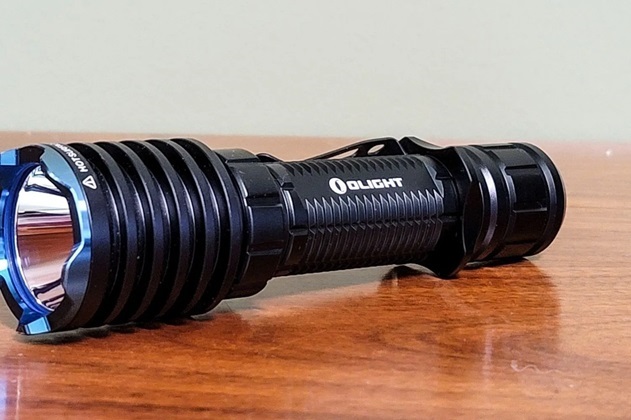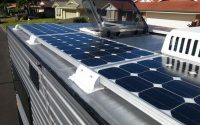How to Choose the Ideal Military-Grade Flashlight
When it comes to tactical flashlights, not all are created equal. Unlike the simple plastic flashlight one might grab during a power outage, a tactical flashlight, also called a military-grade torch, is designed for durability, reliability, and superior performance in extreme conditions.
These flashlights are constructed from sturdy, impact-resistant materials, often weatherproof and capable of withstanding harsh environments. They are known for their exceptionally bright light, long battery life, and versatility in various applications, including military, law enforcement, and outdoor activities. This guide will help you navigate the different military flashlights for saleto find the best option for your needs.
Understanding the Types of Tactical Flashlights

Choosing the ideal torch begins with understanding the different types of military flashlights for sale. Each type has its own unique features and benefits, tailored for specific uses. Here are the most common ones:
1. EDC (Everyday Carry) Tactical Flashlights
Everyday carry (EDC) torches are compact, convenient, and designed for daily use. Despite their small size, modern EDC torches pack a powerful punch, thanks to advancements in LED and battery technology. They are easy to carry in a pocket, bag, or on a keychain, making them an excellent choice for those who need a reliable source of light on the go. Common examples include penlights and keychain flashlights, which are perfect backups to a larger tactical torch.
2. Full-Size Tactical Flashlights
Full-size tactical flashlights are typically larger and heavier than their EDC counterparts. They often resemble standard police torches and are usually between eight to twelve inches long, weighing a couple of pounds. These lights are designed to provide an intense, long-distance beam, making them suitable for search and rescue operations or as a self-defence tool. The sturdy construction of full-size torches also makes them highly durable, and capable of withstanding drops and impacts.
3. Specialised Tactical Lights
Beyond EDC and full-size torches, there are specialised military flashlights for sale designed for specific purposes.
- Spotlights: Ideal for law enforcement and firefighting, spotlights produce a focused beam that can illuminate specific points or areas over long distances. They are perfect for use in search operations or when visibility through smoke or dust is needed.
- Headlamps: These are hands-free lighting solutions that attach to an elastic band around your head. Headlamps are perfect when you need light but also need your hands free, such as when working on detailed tasks or navigating dark terrain.
- Lanterns: Tactical lanterns are designed to emit light in all directions, providing ambient lighting over a larger area. They are great for outdoor activities like camping or emergency situations where you need to light up a room or tent.
- Weapon Lights: These lights are mounted on firearms, providing illumination in dark or low-visibility environments. They are essential for military personnel, law enforcement officers, and hunters who may need to use their weapons at night.
Key Features to Consider When Choosing a Tactical Flashlight
1. Light Output (Lumens)
Light output is measured in lumens (lm), which indicate the total amount of visible light a flashlight produces. Generally, the higher the lumens, the brighter the flashlight. However, brightness isn’t the only factor to consider—beam distance and focus also play critical roles. A flashlight with a high lumen rating but poor beam focus may not effectively light up distant objects. Therefore, consider both the lumen output and how the flashlight’s beam is concentrated.
2. Impact Resistance
Impact resistance is a crucial feature, especially for those in law enforcement, the military, or outdoor activities where the flashlight may be subjected to drops or rough handling. Measured in meters, impact resistance indicates how far a flashlight can be dropped without damage. Tactical flashlights are tested for impact resistance by being dropped multiple times from a specific height to ensure durability and functionality under tough conditions.
3. Beam Distance
Beam distance is the maximum range at which a flashlight can produce at least 0.25 lux, roughly the amount of light needed to see an object clearly in the dark. Beam distance is influenced by the design of the flashlight’s lens, bezel, and the concentration of the light beam. Flashlights with a narrow beam can illuminate objects at a greater distance, while those with a wider beam can cover a larger area but with less range. Choosing a torch with the right beam distance depends on your specific needs, whether you need to see far ahead or cover a wide area with light.
4. Battery Life
Battery life is another critical consideration, especially in tactical situations where reliable, long-lasting light is necessary. Battery life is generally measured by how long it takes for a fully charged flashlight to drop to 10% of its initial brightness. There are two types of battery management systems in flashlights:
- Regulated: These provide consistent brightness throughout the battery life until the battery is nearly depleted, at which point the light will suddenly shut off. While this ensures a stable light output, it does mean there’s no gradual warning before the light dies, so it’s wise to have a backup.
- Unregulated: These gradually dim as the battery life decreases, providing a clear indication of how much battery life remains. This feature allows you to conserve battery life more effectively but means the light may not always be at its brightest.
5. Water Resistance
Water resistance is vital for tactical flashlights used in various weather conditions or environments where they may be exposed to moisture. Water resistance is measured using the IPX rating system:
- IPX4: Water-resistant and can handle splashes from any direction.
- IPX7: Waterproof and can be submerged up to one meter for 30 minutes.
- IPX8: Submersible for extended periods, ideal for use in harsh, wet environments.
Choosing a flashlight with the appropriate IPX rating depends on your specific needs. If you anticipate exposure to heavy rain or potential submersion, opt for a higher IPX rating.



